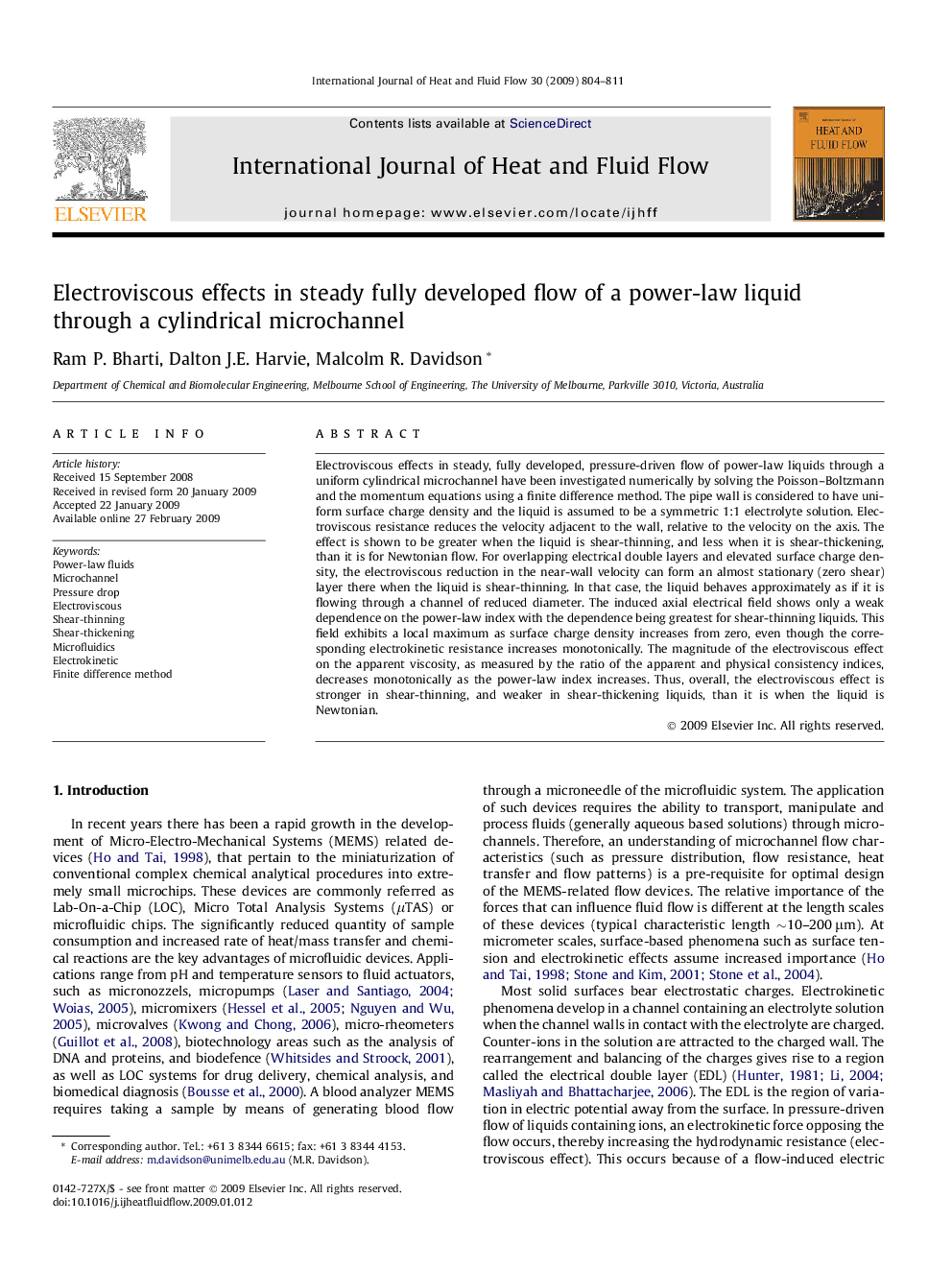| کد مقاله | کد نشریه | سال انتشار | مقاله انگلیسی | نسخه تمام متن |
|---|---|---|---|---|
| 655964 | 1457663 | 2009 | 8 صفحه PDF | دانلود رایگان |

Electroviscous effects in steady, fully developed, pressure-driven flow of power-law liquids through a uniform cylindrical microchannel have been investigated numerically by solving the Poisson–Boltzmann and the momentum equations using a finite difference method. The pipe wall is considered to have uniform surface charge density and the liquid is assumed to be a symmetric 1:1 electrolyte solution. Electroviscous resistance reduces the velocity adjacent to the wall, relative to the velocity on the axis. The effect is shown to be greater when the liquid is shear-thinning, and less when it is shear-thickening, than it is for Newtonian flow. For overlapping electrical double layers and elevated surface charge density, the electroviscous reduction in the near-wall velocity can form an almost stationary (zero shear) layer there when the liquid is shear-thinning. In that case, the liquid behaves approximately as if it is flowing through a channel of reduced diameter. The induced axial electrical field shows only a weak dependence on the power-law index with the dependence being greatest for shear-thinning liquids. This field exhibits a local maximum as surface charge density increases from zero, even though the corresponding electrokinetic resistance increases monotonically. The magnitude of the electroviscous effect on the apparent viscosity, as measured by the ratio of the apparent and physical consistency indices, decreases monotonically as the power-law index increases. Thus, overall, the electroviscous effect is stronger in shear-thinning, and weaker in shear-thickening liquids, than it is when the liquid is Newtonian.
Journal: International Journal of Heat and Fluid Flow - Volume 30, Issue 4, August 2009, Pages 804–811